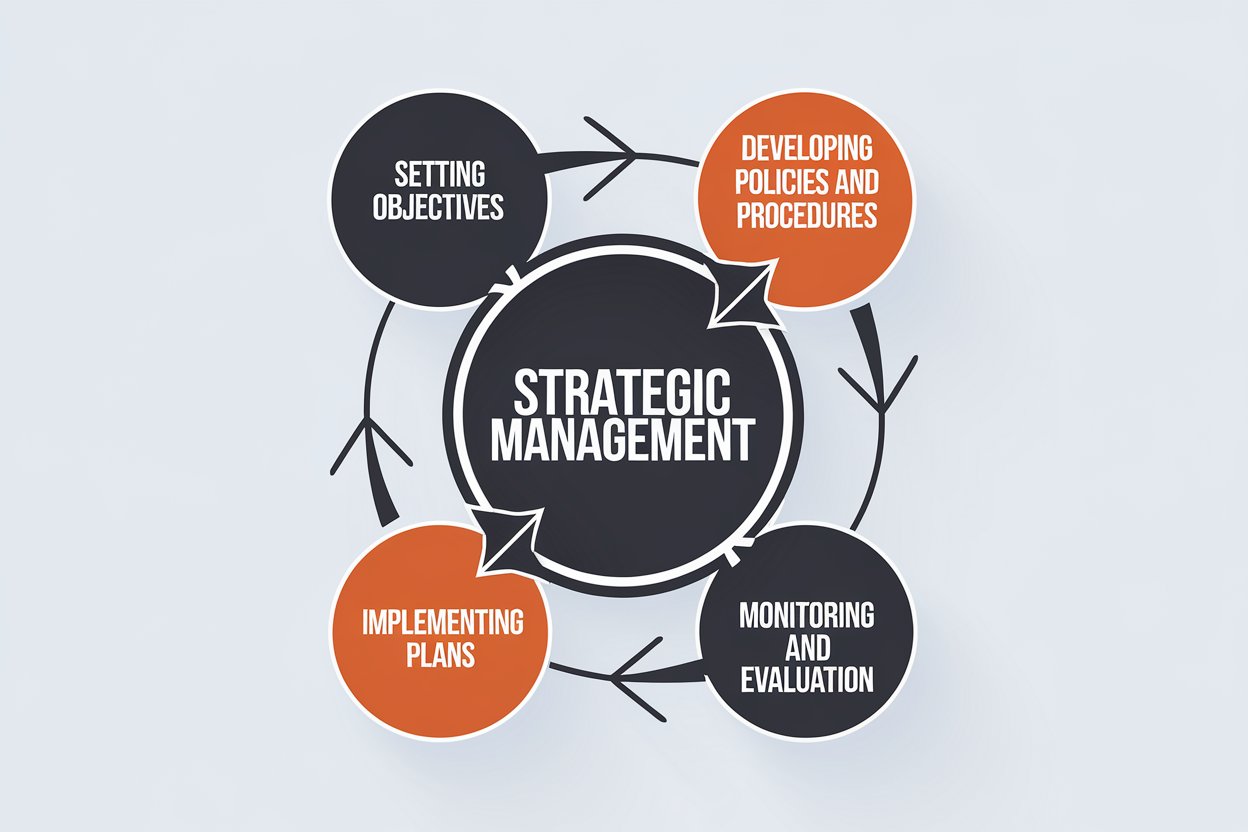Business Administration
Q. No. 2 The Importance of Strategic Management and Key Steps in the Strategic Management Process.

The Significance of Strategic Management and the Steps in the Strategic Management Process
Strategic management plays a crucial role in guiding an organization toward its long-term goals and sustaining a competitive advantage in a dynamic business environment. It involves the formulation, implementation, and evaluation of cross-functional decisions that enable an organization to achieve its objectives.
Significance of Strategic Management
- Direction and Focus: Strategic management provides clear direction by aligning the organization’s mission, vision, and objectives. It ensures that all organizational activities contribute to the overall strategic goals.
- Adaptability to Change: By continuously analyzing internal and external environments, strategic management helps organizations anticipate and respond to changes in the market, technology, and competitive landscape.
- Competitive Advantage: Through careful analysis and positioning, strategic management allows an organization to differentiate itself from competitors, leading to a sustainable competitive advantage.
- Optimal Resource Allocation: It helps in the efficient allocation of resources, including human, financial, and technological resources, ensuring they are directed toward achieving strategic objectives.
- Risk Management: Strategic management identifies potential risks and develops strategies to mitigate them, helping organizations navigate uncertainties.
- Improved Organizational Performance: When a company follows a strategic plan, it fosters long-term growth, improves market share, and enhances profitability through clear goals and informed decision-making.
Steps of the Strategic Management Process
- Mission and Vision Development:
- The first step involves defining the organization’s mission (its purpose) and vision (its long-term aspirations). This sets the foundation for strategy formulation by providing direction and clarity.
- Environmental Analysis:
- Internal Analysis: Examines the strengths and weaknesses of the organization, including its resources, capabilities, and competencies.
- External Analysis: Focuses on identifying opportunities and threats in the external environment, such as industry trends, market dynamics, competitors, and regulations. Tools like SWOT analysis and PESTLE analysis are commonly used.
- Strategy Formulation:
- Based on the analysis, this step involves creating strategies at different levels:
- Corporate Strategy: Overall direction of the organization (e.g., diversification, mergers, acquisitions).
- Business Strategy: Positioning the organization in the market to gain a competitive advantage (e.g., cost leadership, differentiation).
- Functional Strategy: Developing strategies for individual departments such as marketing, operations, and finance to align with overall business goals.
- Based on the analysis, this step involves creating strategies at different levels:
- Strategy Implementation:
- Once the strategies are formulated, they need to be put into action. This involves:
- Allocating resources (people, money, technology).
- Developing action plans and setting timelines.
- Establishing leadership and accountability.
- Creating policies and procedures to support strategy execution.
- Communicating the strategy effectively across the organization.
- Once the strategies are formulated, they need to be put into action. This involves:
- Evaluation and Control:
- In this step, organizations monitor and evaluate the outcomes of the implemented strategy. Key performance indicators (KPIs) and benchmarks are used to assess if goals are being met.
- If performance falls short of expectations, corrective actions are taken. This could involve adjusting strategies or reallocating resources.
- Feedback and Continuous Improvement:
- The strategic management process is ongoing and iterative. Feedback from the evaluation phase feeds back into the system, leading to revisions in the strategy as necessary to adapt to new challenges and opportunities.
Conclusion
Strategic management is essential for organizations to maintain their competitiveness, adapt to changing market conditions, and achieve long-term success. By following a structured process that includes mission setting, analysis, strategy formulation, implementation, and continuous evaluation, organizations can ensure they stay focused on their objectives and continuously improve their performance.